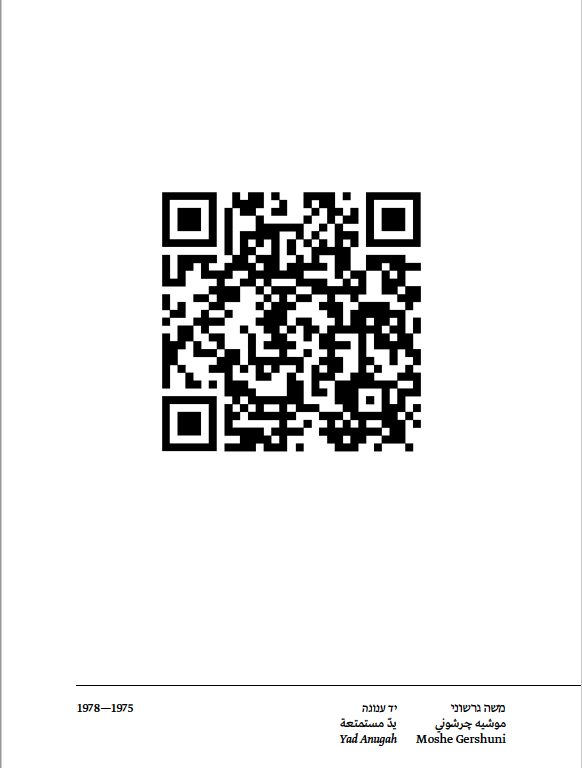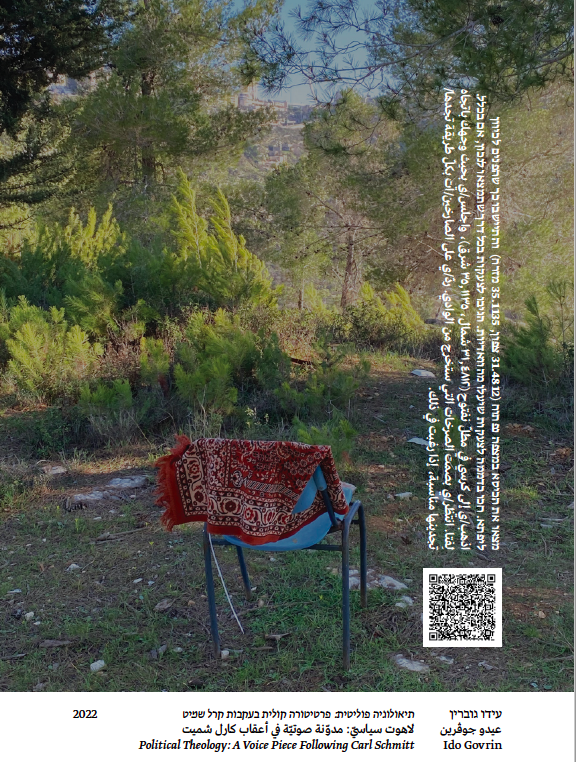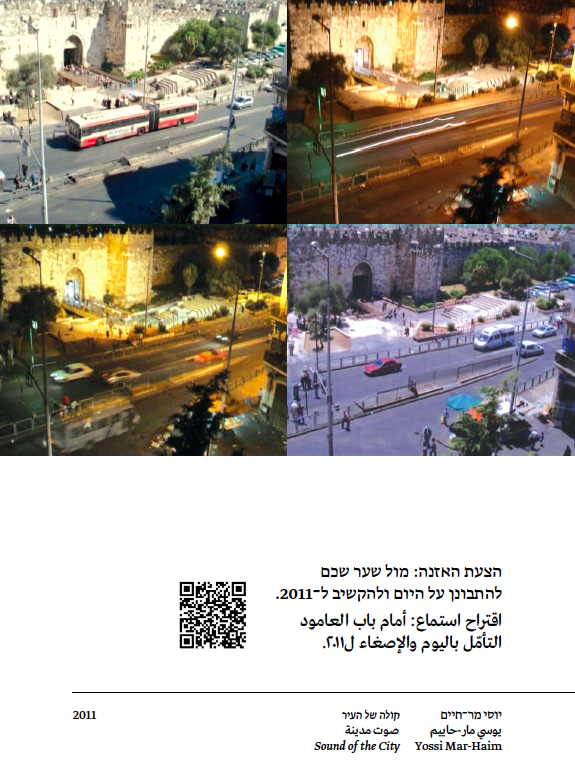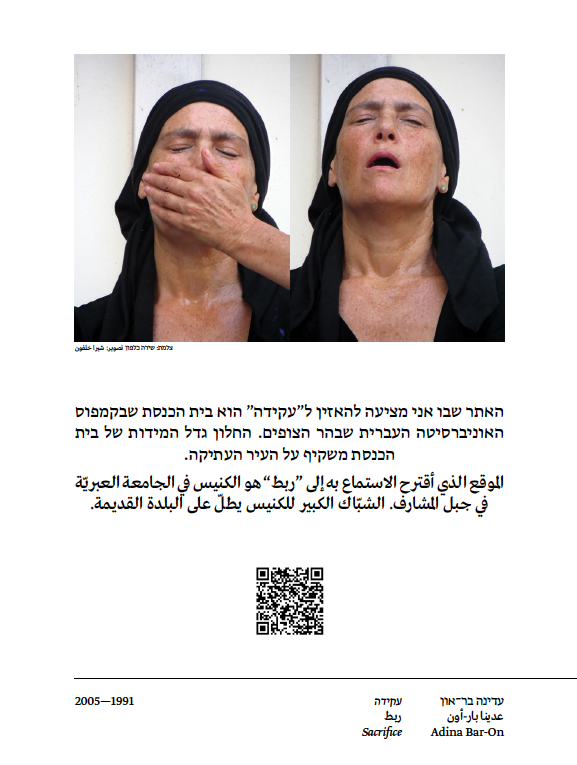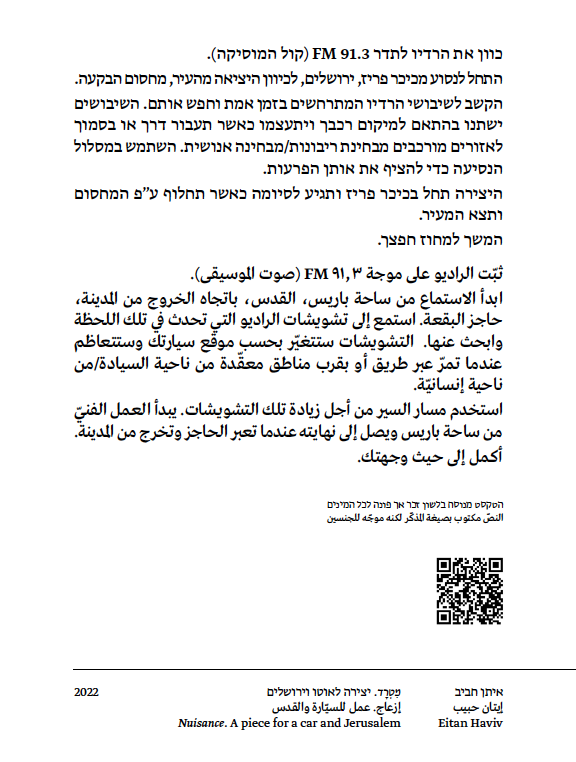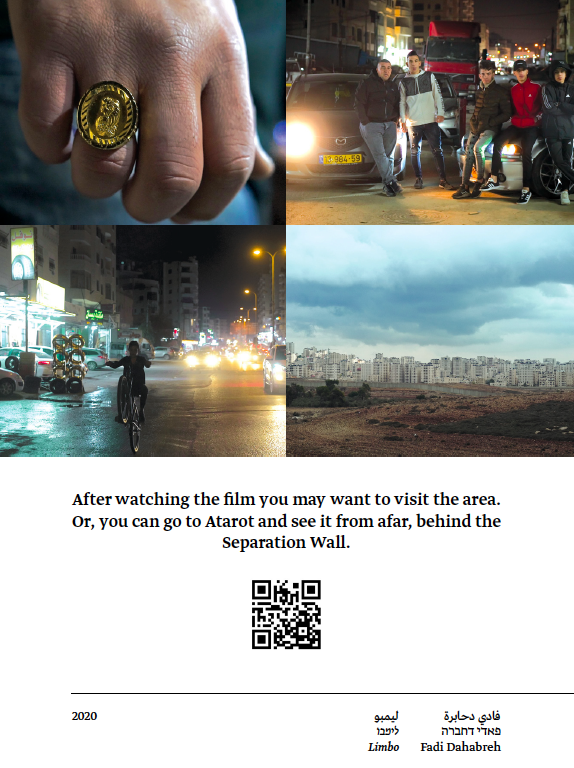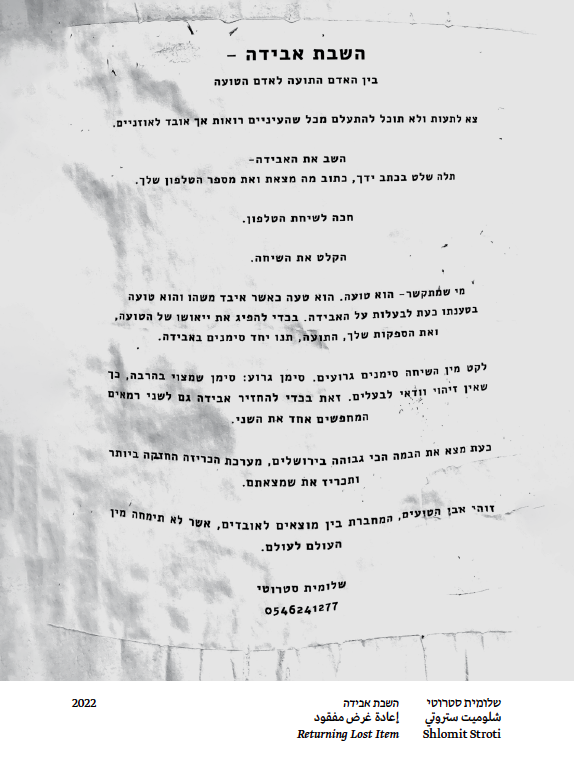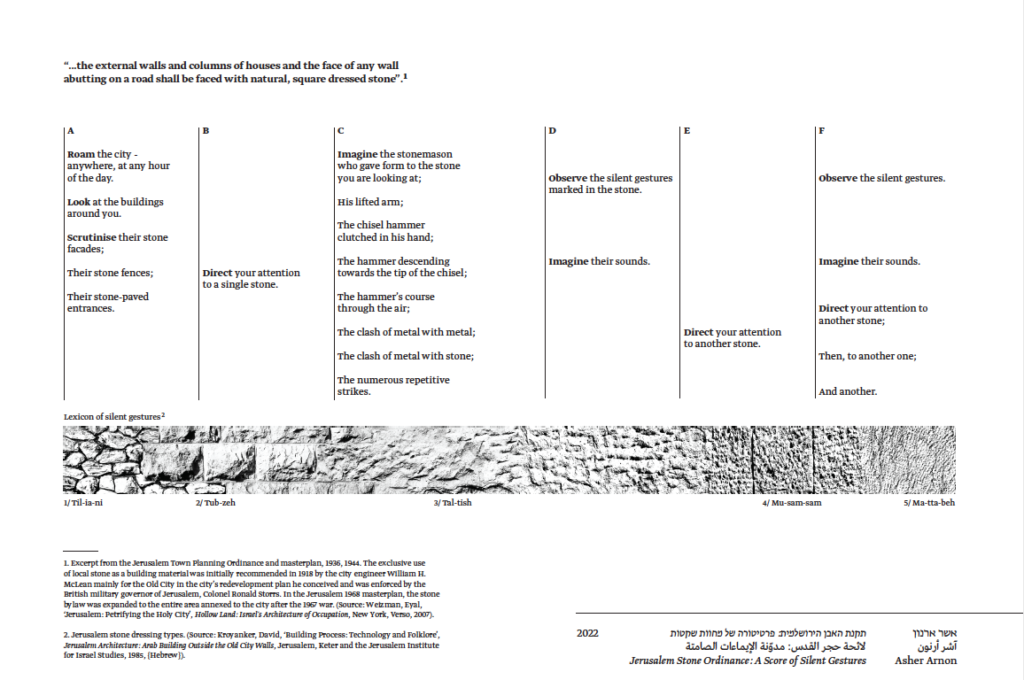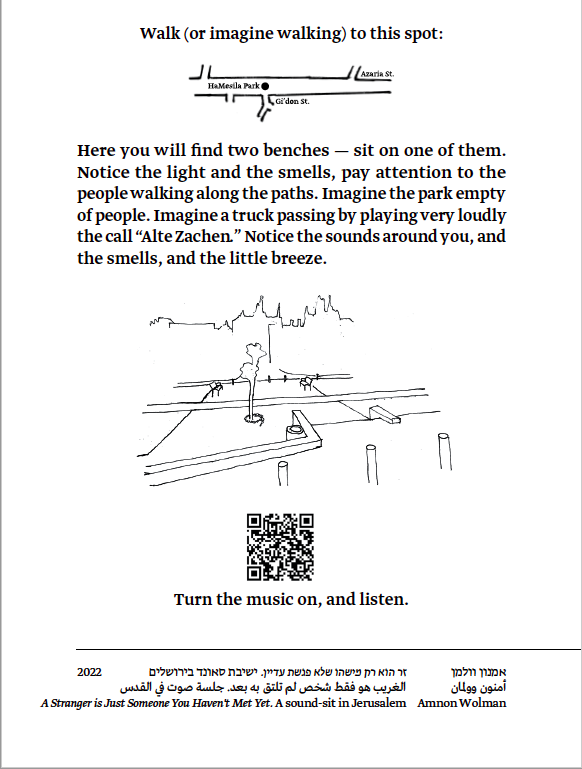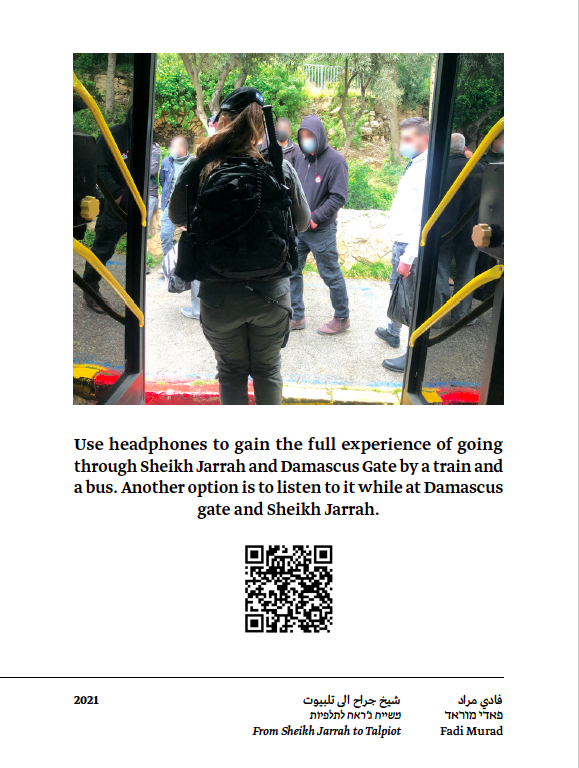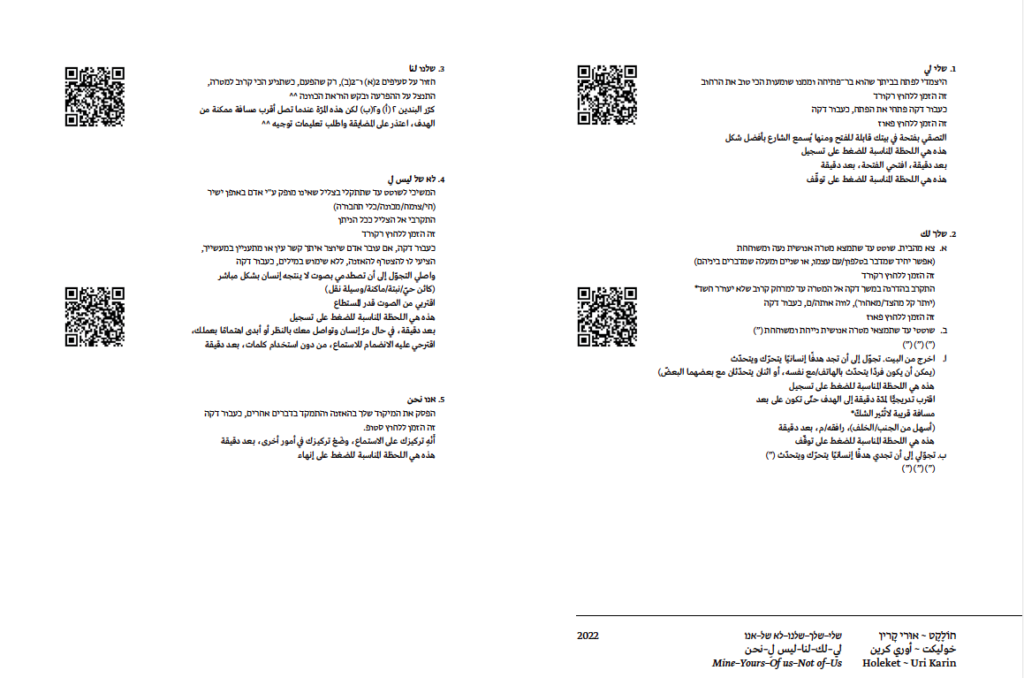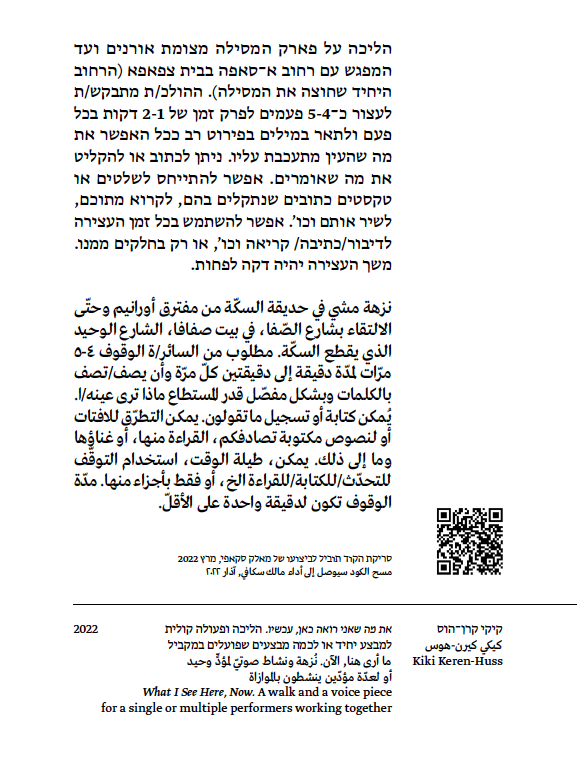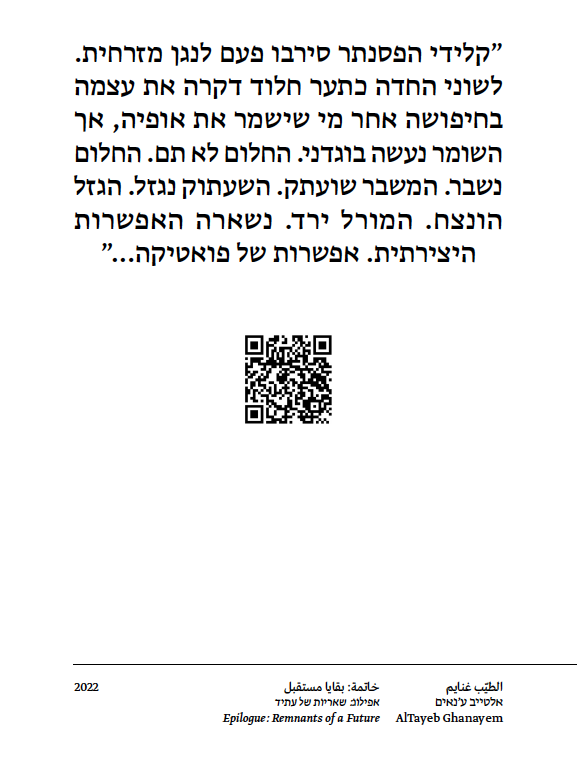Scores For Social Acoustics in Jerusalem
|
Scores for Social Acoustics in Jerusalem is a collection of scores for sonic acts in Jerusalem. The collection includes 16 scores by Palestinian and Israeli artists who practise sound, video, poetry and performance. All scores were inspired by text scores that were popular in the 1960s. Some refer to Jerusalem as a symbol to the necessity of finding the way for living together, some explore the city itself. Some are works that shaped the local artistic cannon, some are newer works, and some were created especially for this collection. Together they examine the acoustics and listening territories in Jerusalem’s public sphere.
“Acoustics” is the array of forces and conditions that allow certain voices or narratives to be part of the city’s soundtrack, and “listening” (as opposed to hearing) is an inquisitive act that deciphers what is heard. In this way the scores in the collection are (different) listening suggestions that illustrate how acoustics influence the public sphere, charge and shape it, and serves as another way to control the subjects that operate within it (sometimes without their knowledge). Some of the scores offer a way to decipher or encode the acoustics in the city and others offer a way to change it. Thus, the collection as a whole offers a social listening to the city: it draws our attention to the silenced, excluded voice, the one pushed to the margins by the state policing forces and the unifying and uniting ideology. Brandon LaBelle argues that the power of social listening is that it operates as a “social acoustics.” Which is to say, social listening creates an alternative array of forces and conditions which can make room for repressed voices and narratives and even amplify them.
Some of the scores are in English, while others are in Arabic and Hebrew. Scan or press on the QR codes for sounds, videos, or maps.
